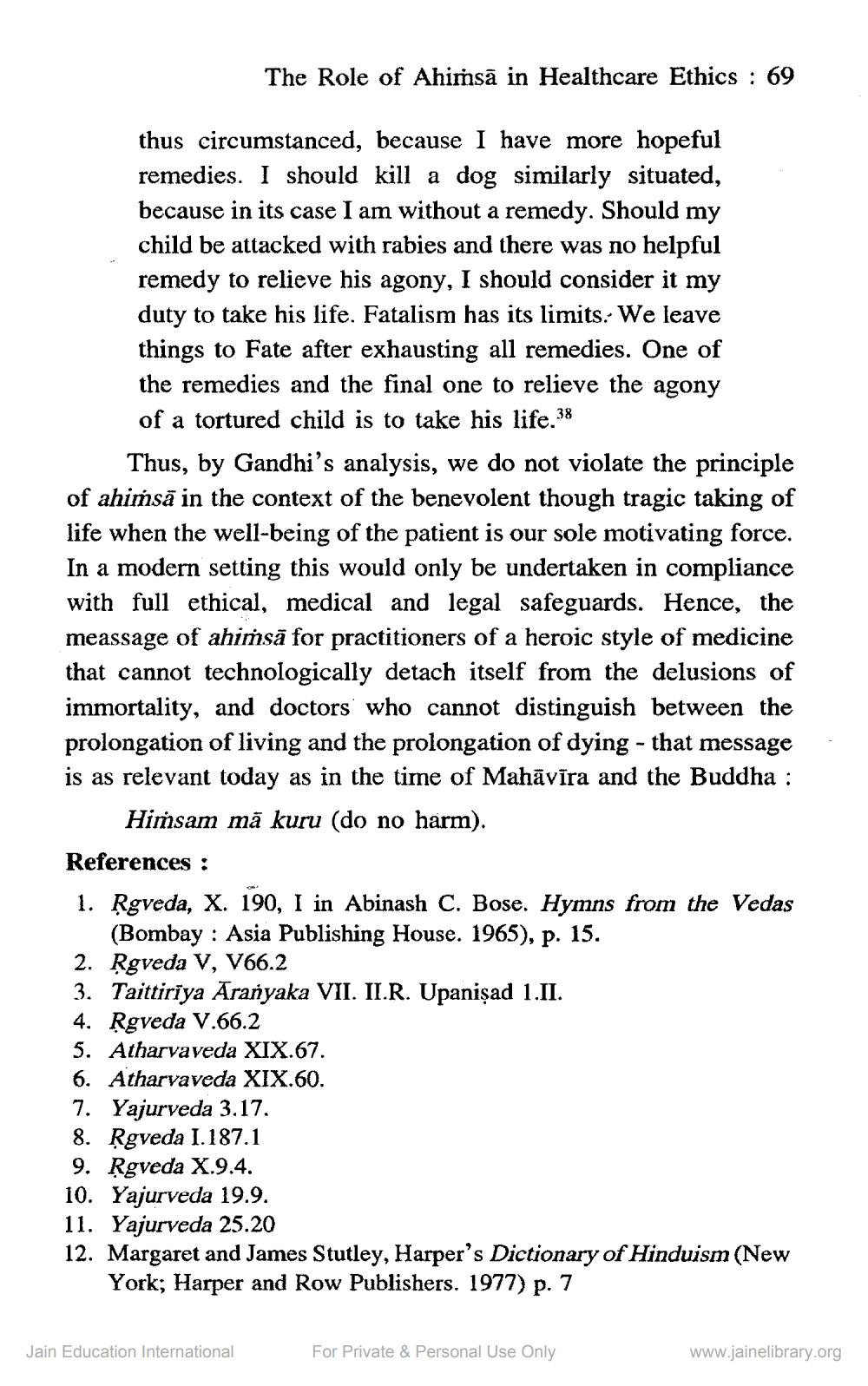________________
The Role of Ahimsa in Healthcare Ethics : 69
thus circumstanced, because I have more hopeful remedies. I should kill a dog similarly situated, because in its case I am without a remedy. Should my child be attacked with rabies and there was no helpful remedy to relieve his agony, I should consider it my duty to take his life. Fatalism has its limits. We leave things to Fate after exhausting all remedies. One of the remedies and the final one to relieve the agony of a tortured child is to take his life.38
Thus, by Gandhi's analysis, we do not violate the principle of ahimsa in the context of the benevolent though tragic taking of life when the well-being of the patient is our sole motivating force. In a modern setting this would only be undertaken in compliance with full ethical, medical and legal safeguards. Hence, the meassage of ahiṁsā for practitioners of a heroic style of medicine that cannot technologically detach itself from the delusions of immortality, and doctors who cannot distinguish between the prolongation of living and the prolongation of dying - that message is as relevant today as in the time of Mahāvīra and the Buddha : Himsam mā kuru (do no harm).
References:
1. Rgveda, X. 190, I in Abinash C. Bose. Hymns from the Vedas (Bombay Asia Publishing House. 1965), p. 15.
2. Rgveda V, V66.2
3. Taittiriya Aranyaka VII. II.R. Upanisad 1.II.
4. Rgveda V.66.2
5. Atharvaveda XIX.67.
6. Atharvaveda XIX.60.
7. Yajurveda 3.17. 8. Rgveda I.187.1 9. Rgveda X.9.4.
10. Yajurveda 19.9.
11. Yajurveda 25.20
12. Margaret and James Stutley, Harper's Dictionary of Hinduism (New York; Harper and Row Publishers. 1977) p. 7
Jain Education International
For Private & Personal Use Only
www.jainelibrary.org




